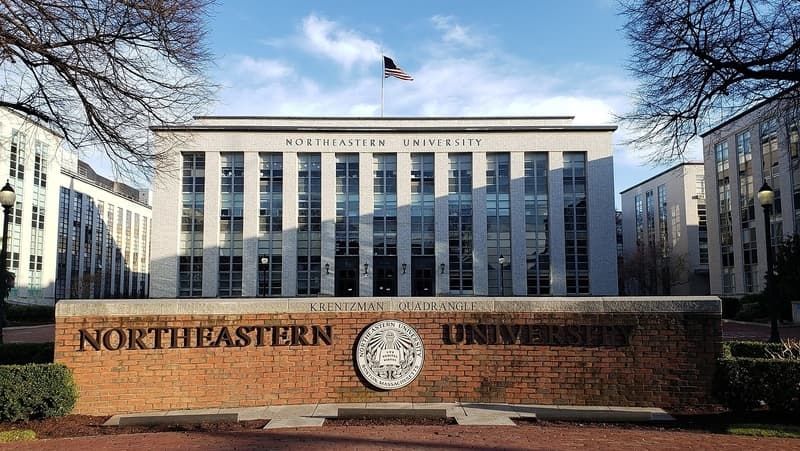When To Apply For Financial Aid: The Early Bird Gets The Aid
Read now/f/64062/1800x700/956ec293a1/financial-aid-image.png)
/f/64062/800x450/889aa54113/need-blind-vs-need-aware.jpg)
As you consider your educational options and determine which US university is best for you, it’s important to ask yourself important financial questions like, “How much debt will I acquire?” and “What type of scholarships and financial aid are available?” It’s also important to find out if the US university on your list are need-blind or need-aware.
When reviewing US university applications, a need-blind university does not consider the applicant’s financial situation when making their admissions decision. Financial aid from need-blind schools typically goes to students who prove financial need. Keep in mind that not all need-blind schools pay 100% of a student’s tuition, and some offer loans to help supplement tuition and university fees.
These are some of the top universities with need-blind admissions policies. Only six schools in the US are need-blind for Canadian students. These include Harvard, Yale, Princeton, UPenn, Amherst, and MIT.
A need-aware (need-sensitive) university makes most of its decisions without considering an applicant’s financial need. Still, it reserves a few spots for students who can pay the total cost of the college’s tuition and expenses without needing loans, grants, or scholarships.
Many universities do not like to advertise they are need-aware because it implies they may not admit a student because of their financial needs. The biggest challenge students with financial needs face when applying to these universities is not getting into the university based on their needs. But, if these students gain admission to these universities, many offer generous financial aid packages to domestic and international students.
These are some of the top universities with need-aware admissions policies.

Need-blind schools have advantages for students needing financial aid for university. They offer opportunities for quality higher education at a fraction, and in some cases, none of the cost. Need-blind universities also tend to be more diverse, giving all students equal opportunities in and out of the classroom despite their socio-economic background. Additionally, students accepted to a need-blind college know their acceptance was due to their academics and merits, not their family’s financial status.
Need-blind schools such as Columbia University or New York University are also ranked among the top five best schools for international students based on acceptance rates, diversity, and overall international student population.
Not all need-blind universities are wealthy enough to meet 100% of each student’s needs. Some can offer generous aid packages, and others supplement their financial aid with loans, on-campus job options, and scholarships. Unfortunately, students who cannot afford to pay the difference in cost typically have to turn down the admission offer.

While need-aware schools look at your academics and financial needs when evaluating your application, you’ll likely get an excellent financial aid package from the school if they admit you and you are lower-income. These schools often have the money to fill the gap between what you can pay and tuition costs.
Research the need-aware schools on your list. You might be surprised to find out that they often have more diversity than some need-blind schools. For example, Northeastern University, despite being a need-aware school, is considered the second top university for international students.
The most significant disadvantage to applying to a need-aware school is that your financial situation might affect admission. If the school cannot support you financially, they may not admit you.
If you need financial support for universities:
When international students apply to university, they fill out the FAFSA (Free Application for Federal Student Aid) or the CSS (College Scholarship Service) to document their financial situation and apply for scholarships. In these documents, students calculate their Effective Family Contribution (EFC). This calculation estimates how much money their family can afford to pay per year for the university or college. Depending on the university, they submit these documents as part of their application or separately.
Need-blind universities send these documents to a financial office that’s different from the admissions office. The school only looks at these papers after the student’s acceptance into the university. Then the school creates a financial aid package for the student to consider. Unfortunately, the EFC calculator isn’t perfect and doesn’t consider unique circumstances that prevent a student from paying the total amount from their EFC. While a student may appeal to the school for more aid, there’s no obligation to provide additional funds because they have met their policy’s requirements.
Need-aware is similar in the documentation process, where international students need to fill out either the CSS or the FAFSA. Admissions officers consider these documents in their application evaluations, weighing their desire for the student against the financial responsibility to the student.
Many schools that fall into the need-aware category offer merit-based scholarships to counter the cost to the student. Instead of focusing on their financial situation, they use academics to determine who receives scholarships.
Can I afford to study in the US?
Need-blind and need-aware schools have advantages and disadvantages. It doesn’t hurt to apply to need-aware schools, especially if your grades, tests, and extracurriculars are at the top of your class. Do your research, ask admissions offices about their policies, and don’t forget to look into other forms of financial aid.
Interested in learning more about need-blind and need-aware schools? Contact one of our admissions counselors for more information.
Crimson Education is the world’s leading university admissions support company specializing in helping students gain entry to some of the world’s most competitive universities. Our holistic approach provides support across all areas of the US and UK university application process. We assist you to find your best-fit university, create a personalized roadmap, ace your standardized tests, craft the perfect essay, build candidacy through extracurriculars, and more. Find out more about our Admissions Support program.